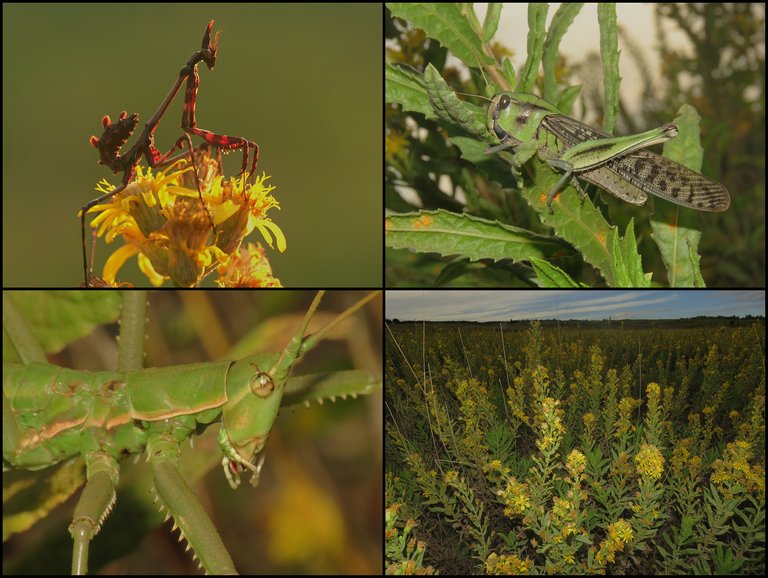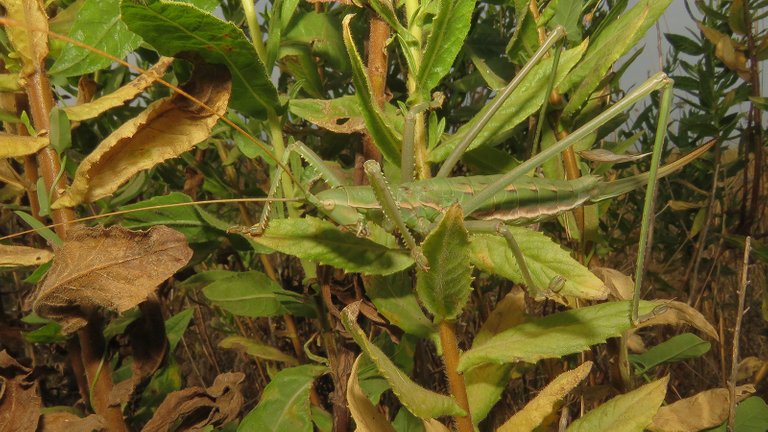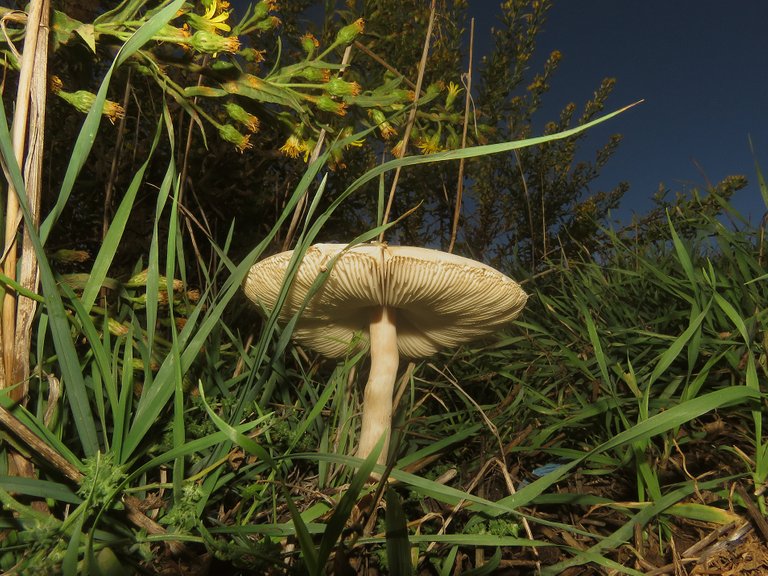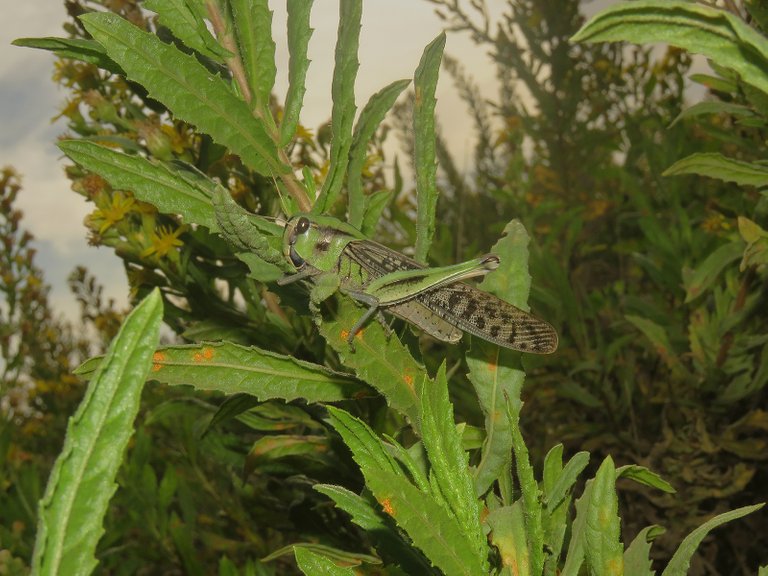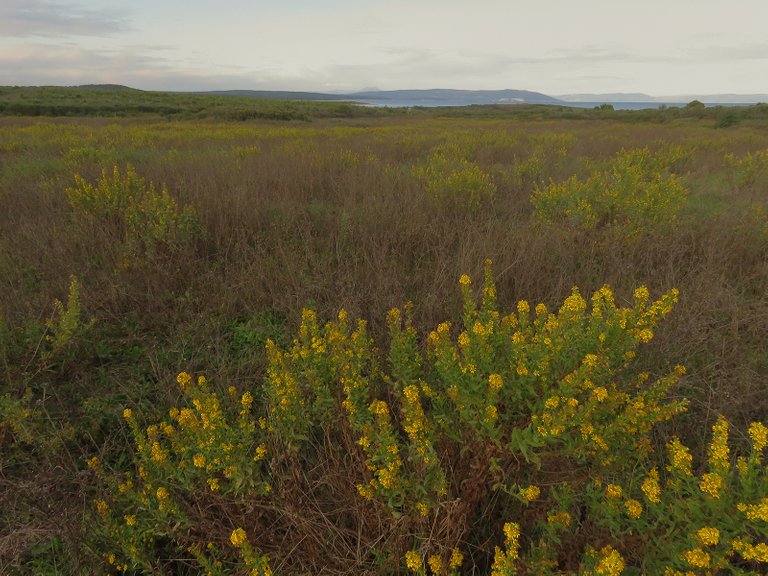Every autumn, the vast meadows in the coastal area called Marlera get decorated with a multitude of lovely yellow flowers.
Those flowers belong to one of the plants that cover large stretches of Marlera. Its scientific name is Dittrichia viscosa. I don't know any common name of this plant in my language, but earlier today, I found out on the Internet that in English, Dittrichia viscosa is commonly known as the false yellowhead or sticky fleabane.
Dittrichia viscosa has plenty to offer so you can always find a nice variety of insects crawling, jumping, and flying around the plants in bloom. The Pieris brassicae butterfly shown in this photograph is enjoying the nectar of the flowers on the top of the plant.

This bushcricket was photographed lower on the same plant ...
... where it was chewing one of the many sticky, aromatic leaves.

Tylopsis lilifolia is the name of this species from the Tettigoniidae family.
On the 15th of September 2021 ...

... while walking through the fields of Dittrichia viscosa like many times before ...

... I came across one spectacular rarity ...
... well hidden among the foliage.
This really massive bushcricket is the Saga pedo ...
... commonly known as the predatory bush cricket.
While many other bushcrickets supplement their omnivorous diet with other insects and their carcasses, the Saga pedo is a real predator.

Its strong fore and mid legs are covered with spines, and the insect uses them to catch and hold firm the prey.
The prey is usually killed by biting into the throat and is soon decapitated.
The area inhabited by this unique member of the Tettigoniidae family is very wide, but in all the places, from the Mediterranean parts of Europe to China, the predatory bush cricket is always fairly uncommon and hard to see.
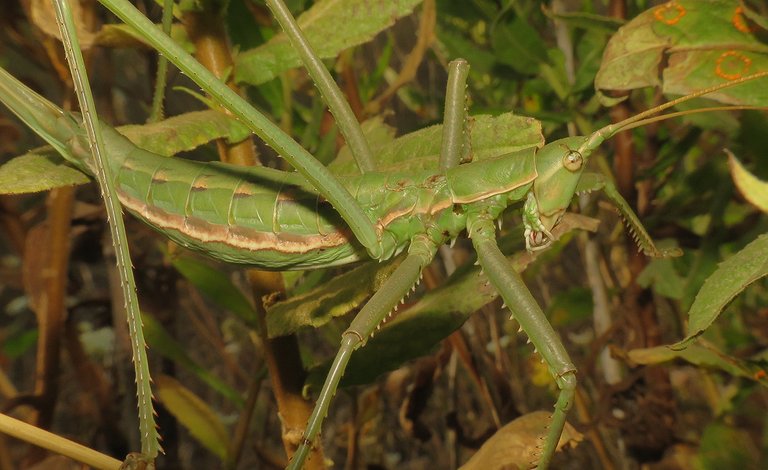
Here in my area, the Istra peninsula on the Croatian side of the northern Adriatic, this is definitively a rarity. I saw this insect only once. That's why I took many (or too many, maybe) photographs on that occasion, and I decided to include all of them in this post.

With its usual body length of ten to twelve centimeters, this is one of the biggest insects one can encounter in Europe. The strong and long legs covered with spikes make it look even bigger and give the predatory bush cricket an impressive and menacing appearance.
I find it very beautiful, of course.

As you surely noticed through this long, and slightly repetitive line of photographs, the predatory bush cricket is very well camouflaged among the leaves of Dittrichia viscosa.
Camouflage plays an important part in the hunting strategy of this species. It allows the Saga pedo to come close enough to the prey, and then leap and grab it with the long thorny legs.

The honey bees (Apis mellifera) often visit these flowers in big numbers.
in September 2022, always in Marlera ...

... I caught two of those bees with my camera, so you can see them collecting the nectar in this post.

Here you can see a different kind of bee. It's a bumblebee. The scientific name of the species is Bombus terrestris.

The bumblebee was photographed in October 2019, after sunset, so the insect wasn't active. It was ready to spend the night hidden in the dense growth of Dittrichia viscosa.

In this old photograph, taken on the 29th of September 2008, you can see a diurnal moth collecting nectar through its long proboscis. In the following shot from the same year ...
... another hummingbird hawk-moth is flying around the yellow flowers that produce plenty of nectar. Macroglossum stellatarum is the scientific name of the species.
On the 10th of October 2020 ...
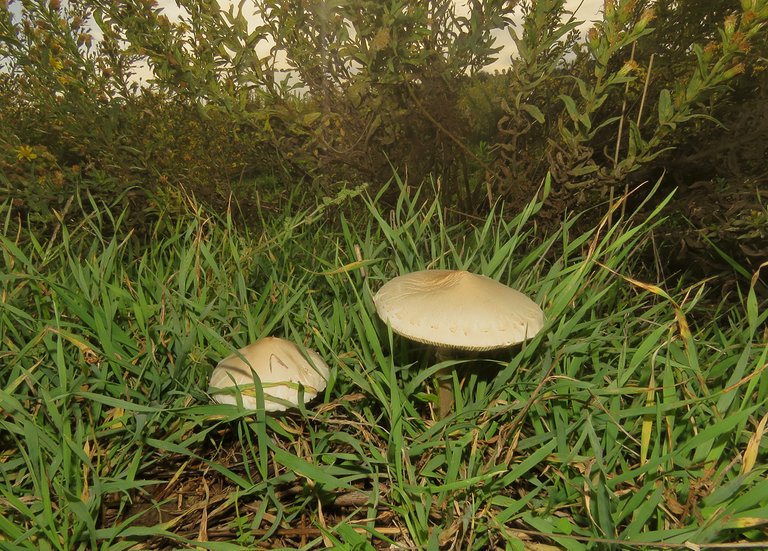
... I found a bunch of mushrooms in one of the fields covered with Dittrichia viscosa.
Can't tell you the name of the species or anything else about them. All I can do is show you how they look.
That same day in 2020 ...
... I photographed an interesting grasshopper ...
... on one of the fairly tall plants near the mushrooms.
This is the Locusta migratoria.

A completely developed adult of that pretty big species from the Acrididae family. In the following photograph ...

... you can see a nymph.

This young grasshopper with small, still useless wings, was photographed in the same area, two months earlier.
Here, the focus is again on the adult insect photographed in October.
This beautiful insect, photographed in 2010 ...

... is a young mantis. The Empusa pennata nymph.
Here you can take another look at the scenery, and then, in the following photograph ...

... I'll show you another grasshopper.
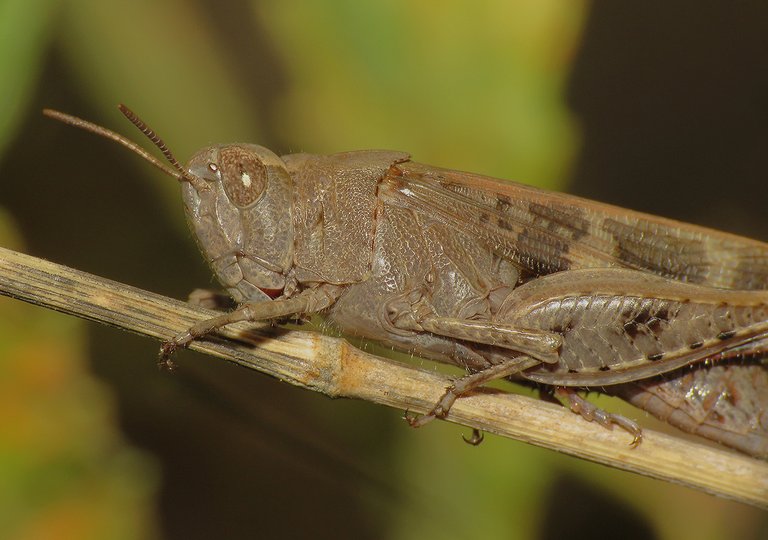
This Aiolopus strepens is much smaller than the Locusta migratoria.
On one occasion in 2009, while exploring the same area ...

... I spent some time photographing a mating pair of very small bugs from the Lygaeidae family.

I didn't know the name of the species back then ...

... but today, I can tell you that these are the Nysius senecionis seed bugs. In the following four photographs ...

... I'll show you four more insects photographed among the flowers of Dittrichia viscosa. This is the Pontia edusa, a butterfly from the Pieridae family.
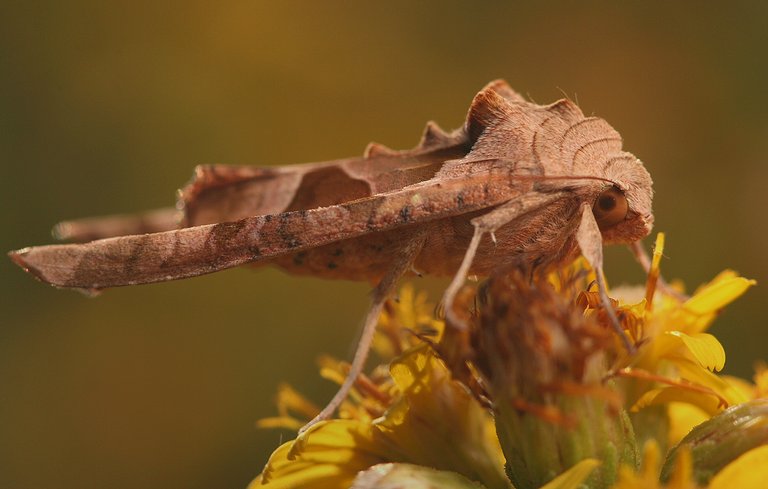
Here you can see a moth from the Noctuidae family. The name of the species is Phlogophora meticulosa.

This is a bushcricket. Decticus albifrons, commonly known as the Mediterranean wart biter. In the following photograph ...

... you can see the Italian tree cricket (Oecanthus pellucens).

And that's it. The following links will take you to the sites with more information about the protagonists of this post. I found some stuff about them there.
https://en.wikipedia.org/wiki/Dittrichia_viscosa
https://en.wikipedia.org/wiki/Pieris_brassicae
https://en.wikipedia.org/wiki/Tylopsis_lilifolia
https://en.wikipedia.org/wiki/Saga_pedo
https://en.wikipedia.org/wiki/Western_honey_bee
https://en.wikipedia.org/wiki/Bombus_terrestris
https://en.wikipedia.org/wiki/Hummingbird_hawk-moth
https://en.wikipedia.org/wiki/Migratory_locust
https://en.wikipedia.org/wiki/Empusa_pennata
https://en.wikipedia.org/wiki/Aiolopus_strepens
https://www.gbif.org/species/4486367
https://en.wikipedia.org/wiki/Pontia_edusa
https://en.wikipedia.org/wiki/Angle_shades
https://en.wikipedia.org/wiki/Decticus_albifrons
https://en.wikipedia.org/wiki/Oecanthus_pellucens
AS ALWAYS HERE ON HIVE, THE PHOTOGRAPHS ARE MY WORK.
